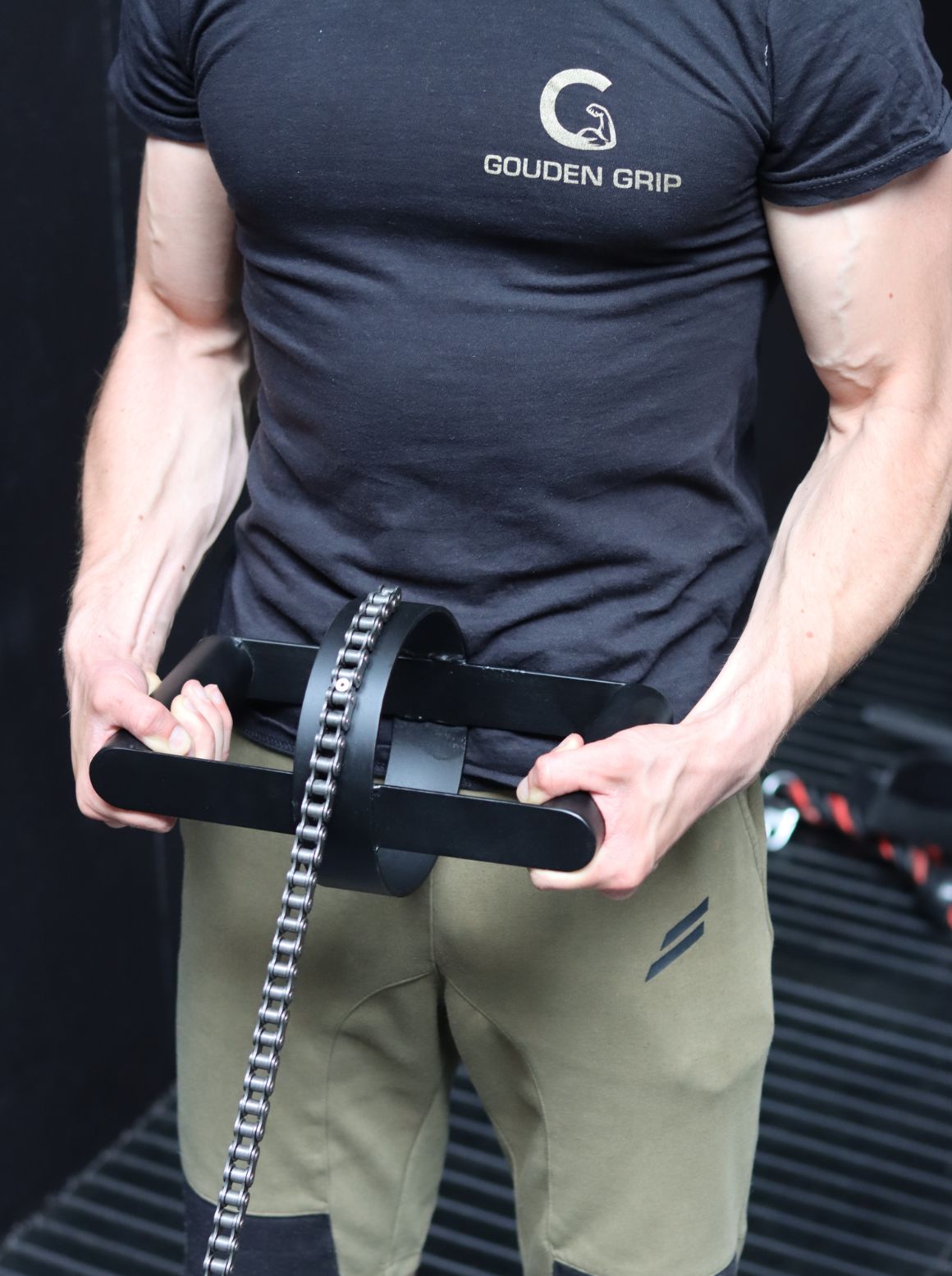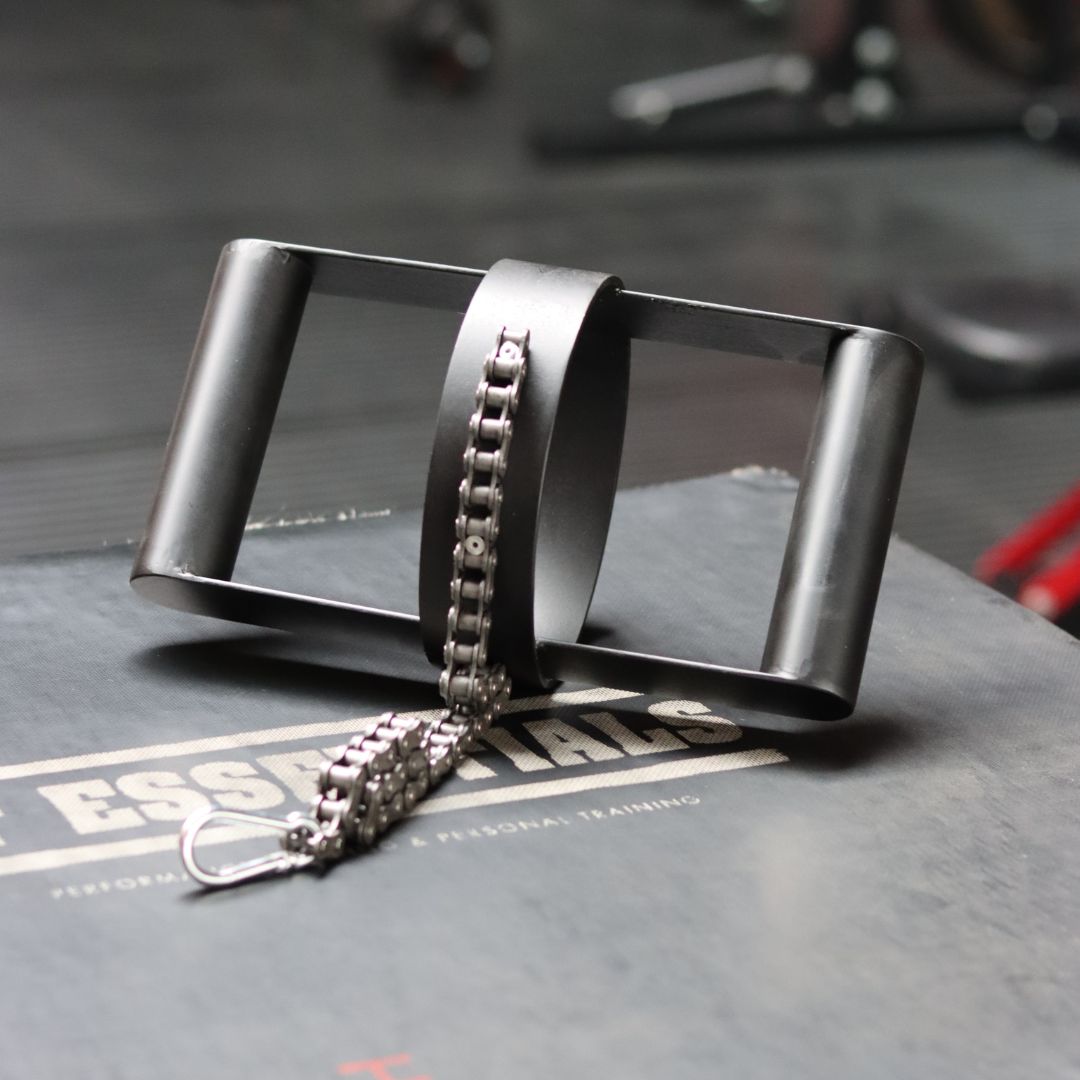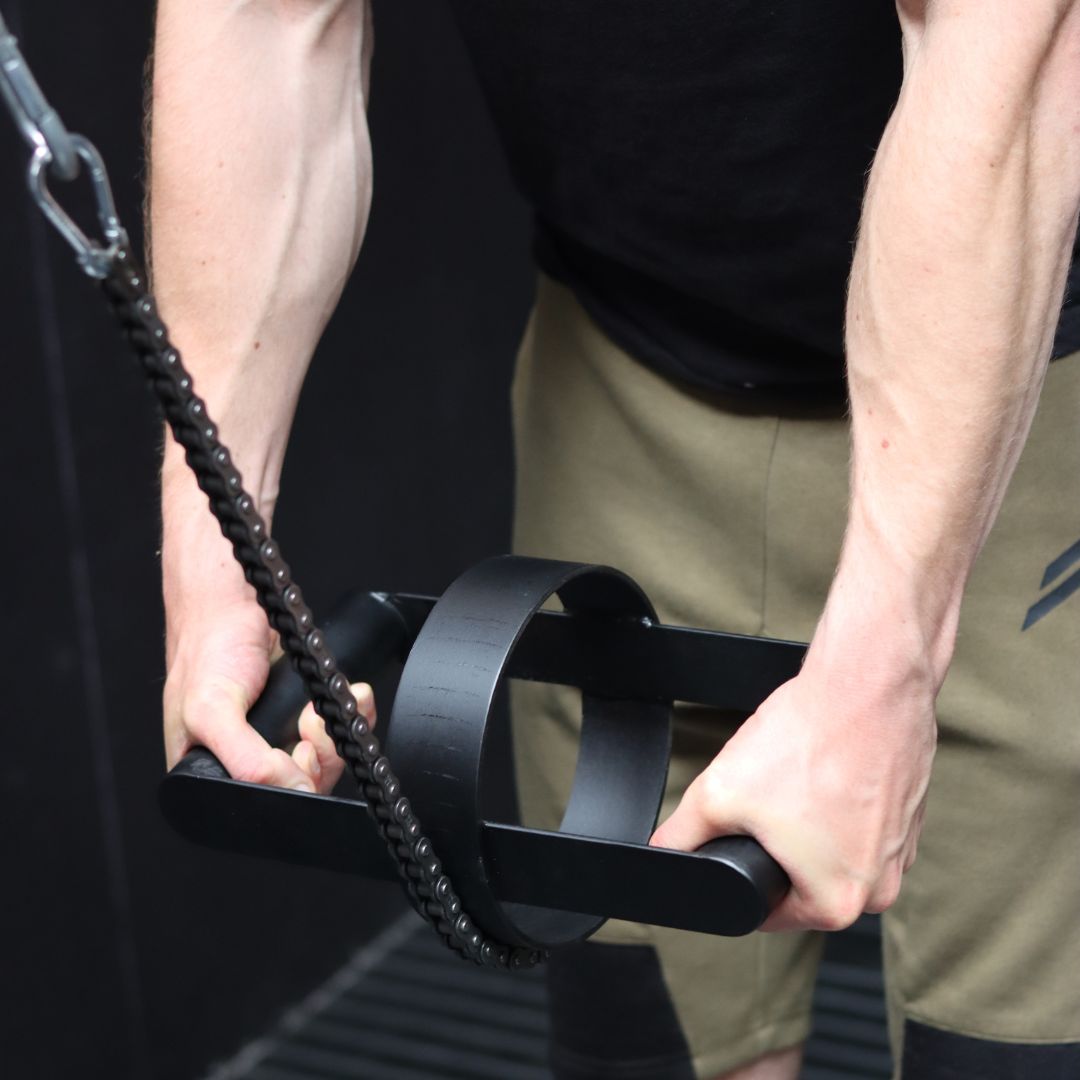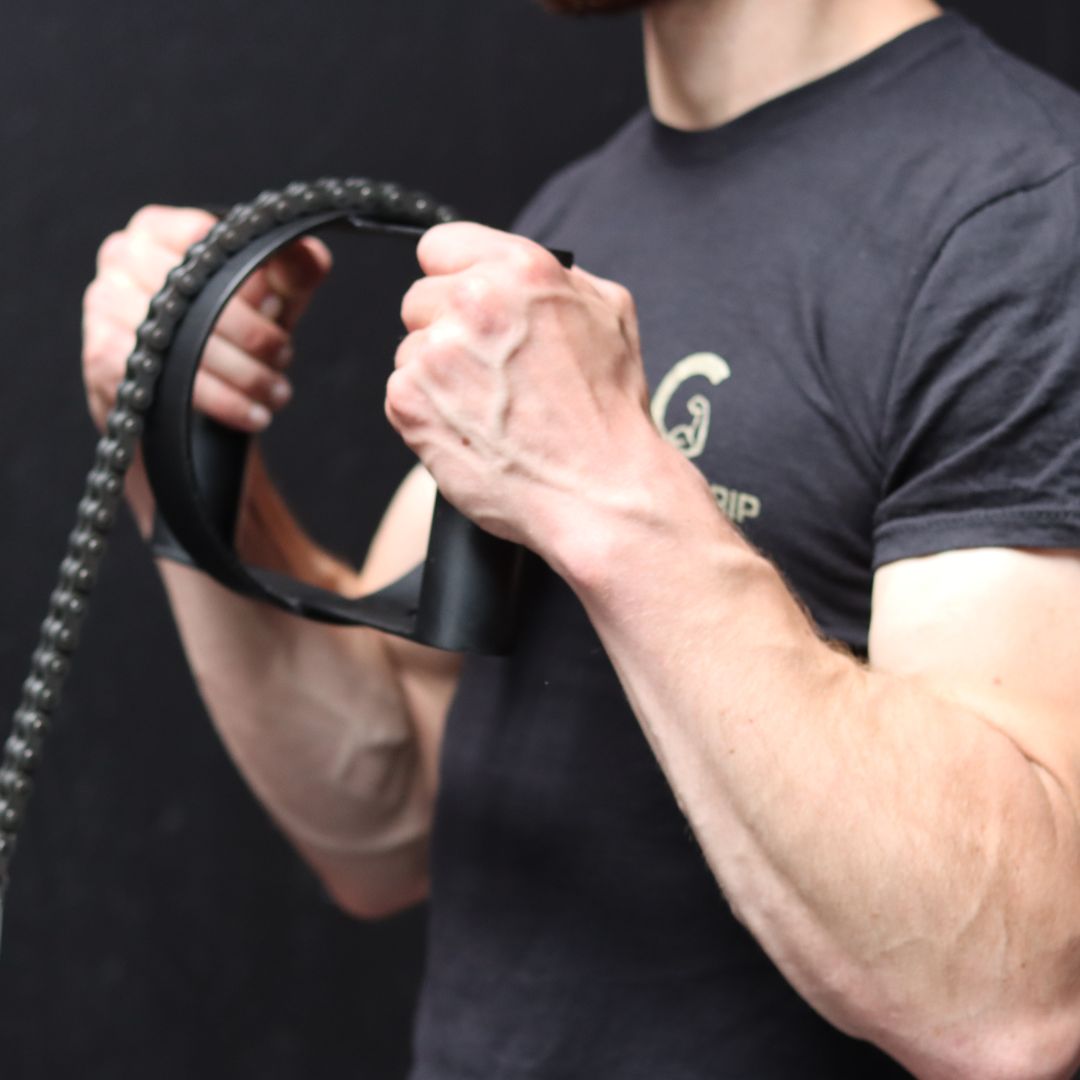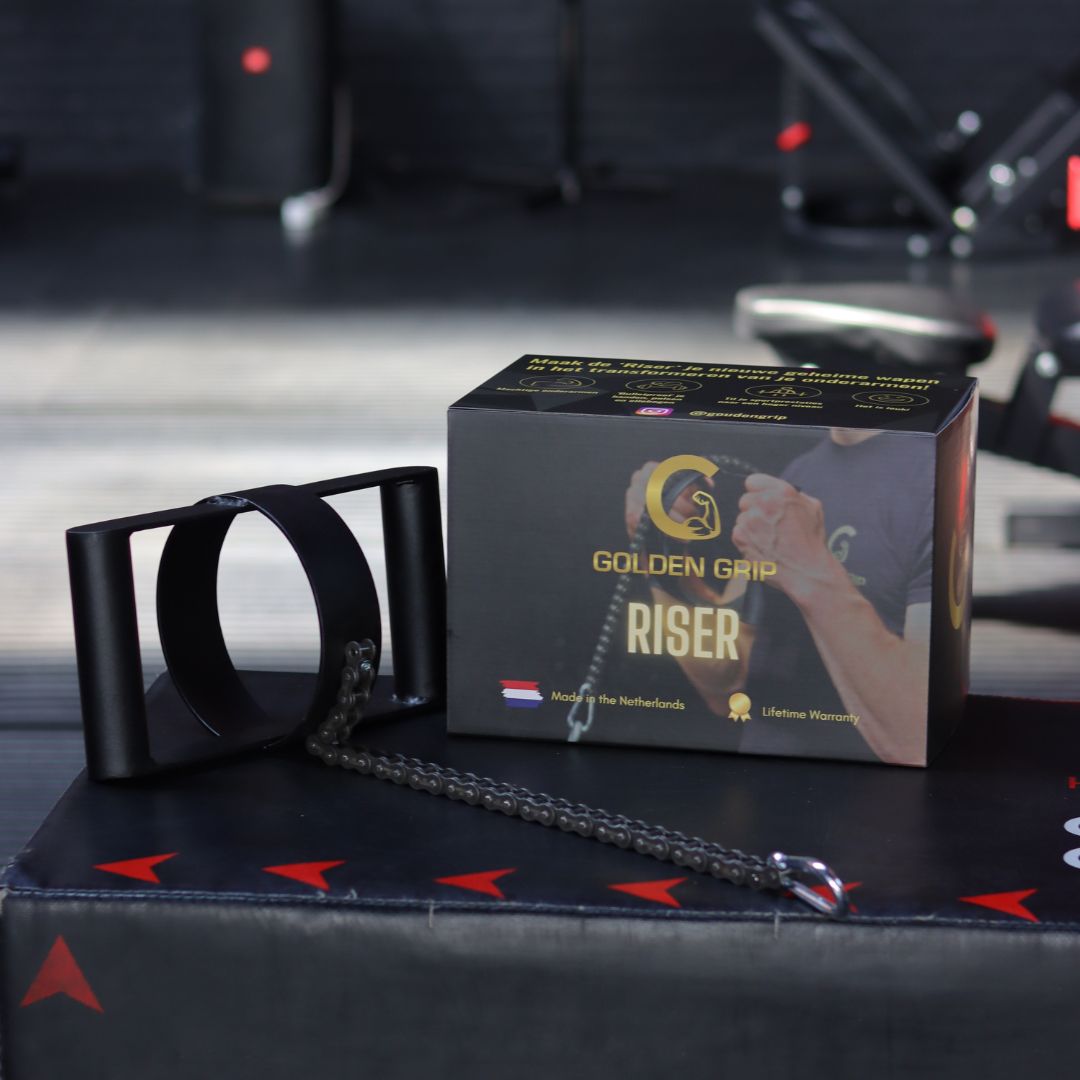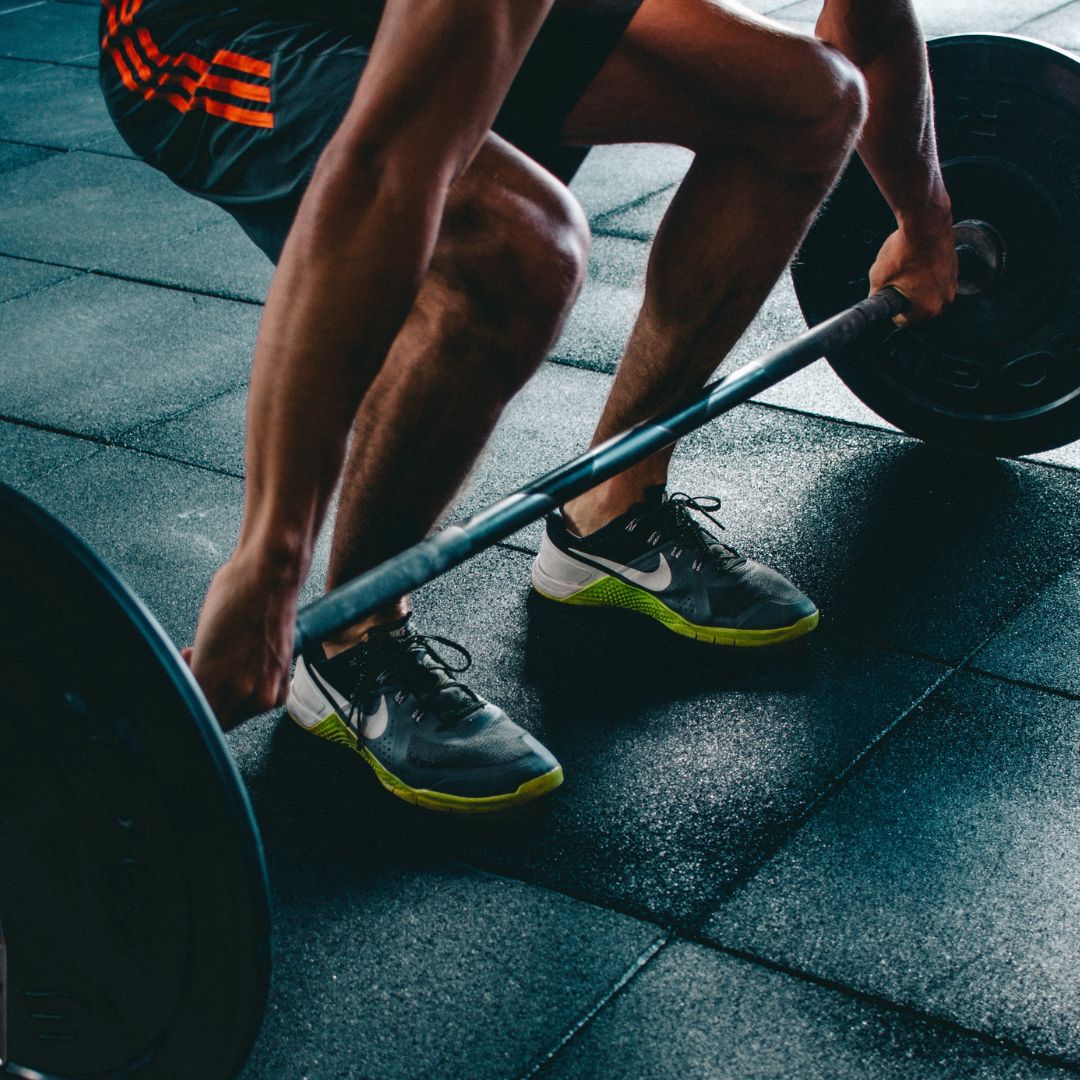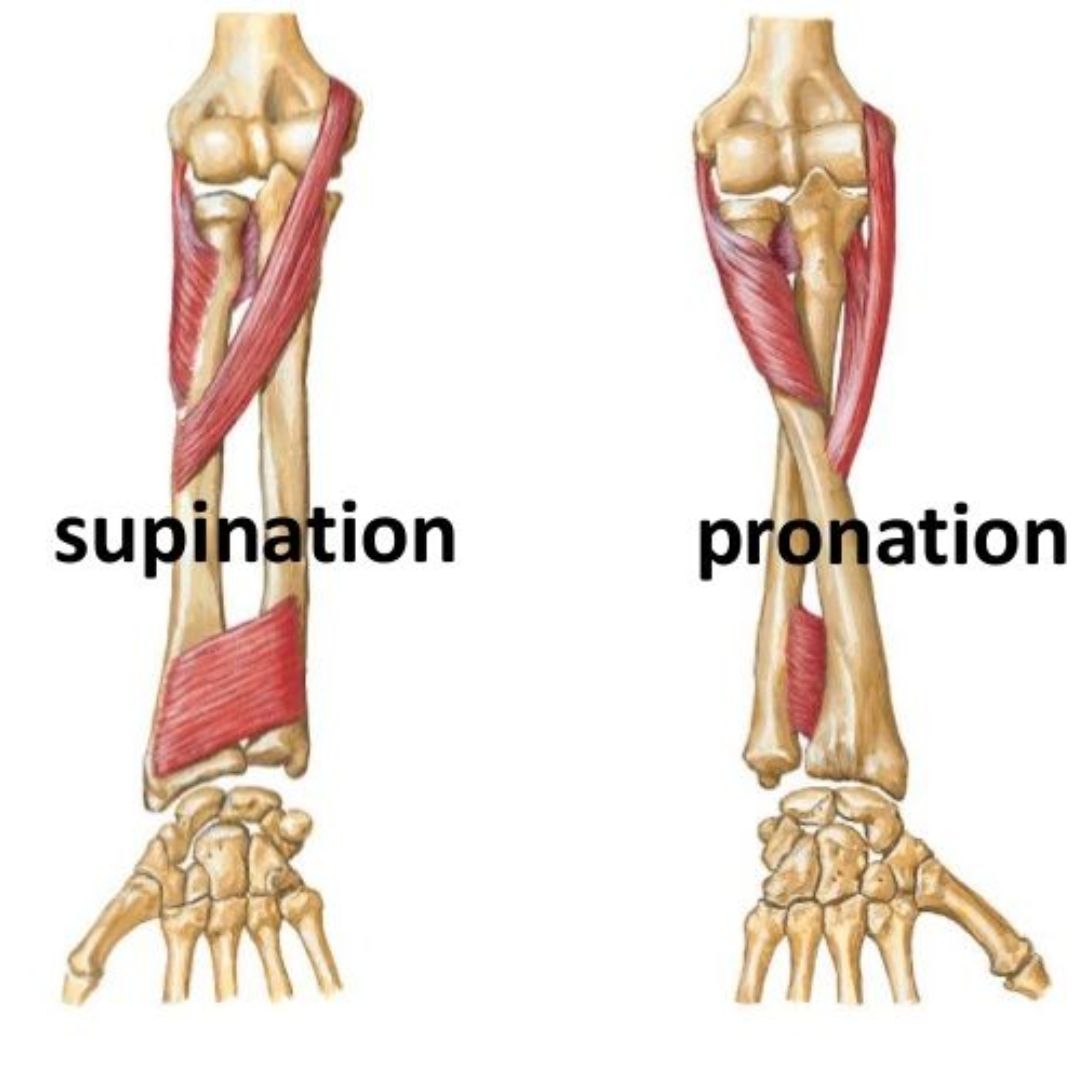The perfect way to spice up your curls and extensions
How & why it works
The Riser will give you a unique stimulus, but some people may still be confused on what actually makes it special. This requires some understanding of exercise science. You see, with a regular dumbell/barbbell the resistance is only going one way: straight down. With the Riser, there are multiple lines of resistance thanks to the chain.
Because the chain wraps around the circle, it actively tries to open up your wrist. To fight this from happening, you have to isometrically contract the muscles to stabilize the wrist. On top of that, you can also add in little movements to work the wrist up and down through its whole range of motion.
During a hammer curl motion, this means that two things are happening. First, the resistance is pulling down on your arm, which will train the biceps and forearm. Second, the chain tries to pull your wrist down, which causes your forearm to work overtime to stabilize the wrist. It also allows you to finish the movement with an extra strong contraction, since you fully flex your wrist upwards against the resistance of the chain to end your rep, known as radial deviation.
If we look at a tricep extension, the same thing is happening, just the opposite way. The chain tries to open the wrist upwards, which means your forearm has to stabilize the wrist downwards. Here it also allows you for an extra strong tricep contraction at the end of the rep, since you can flex your wrist backwards against the resistance. Don't believe it? Try it out: flex your tricep as hard as possible, and then additionally also try to drive the pinky-side of your wrist towards your elbow. You'll notice that this makes the tricep contraction even greater. This movement is known as ulnar deviation.

